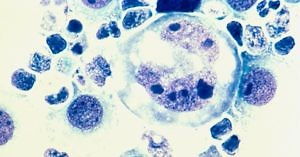Tackling immunosuppression with a dual approach to TIGIT and adenosine
In the second post of the day on overcoming immunosuppression and a hostile tumour microenvironment, we take an extended look at the TIGIT and adenosine pathways through the lens of a company active in both of these niches.

Karl the Fog in San Francisco
What are they doing and, importantly, why are they taking a particular approach?
Where might they also be going in the future?
In our latest expert interview we offer not one, but two, biotech executives from the context of the science and biology driving their commercial strategy.
With the latest announcement yesterday that their key phase 2 trial will continue and data to be presented at an updated medical meeting, there’s a lot to learn and some key pointers to think about.
BSB subscribers can read more on our latest look at a clinical stage biotech company active in the cancer immunosuppression space – you can log-in or click to access our ongoing oncology coverage.
This content is restricted to subscribers


 Over the next couple of posts we will be highlighting different pipeline agents, along with in-depth expert interviews to explore some intriguing early or emerging approaches. Some are in preclinical getting ready to enter the clinic, while others are already being evaluated in phase 1/2 studies.
Over the next couple of posts we will be highlighting different pipeline agents, along with in-depth expert interviews to explore some intriguing early or emerging approaches. Some are in preclinical getting ready to enter the clinic, while others are already being evaluated in phase 1/2 studies.



 We’ve been following this niche since NIBR scientists reported important preclinical results with their probe molecule (
We’ve been following this niche since NIBR scientists reported important preclinical results with their probe molecule ( By an interesting quirk of history, the first time we wrote about PARP inhibition was in the same year and now it is one of the selections in the ASCO plenary today. You can read more about the
By an interesting quirk of history, the first time we wrote about PARP inhibition was in the same year and now it is one of the selections in the ASCO plenary today. You can read more about the 
